How To Plan Your Garden
Perfecting a garden design, no matter what size outdoor space you have, requires a lot of thought and care. Whether you want a simple tweak to include raised beds, or if you want to know how to design a garden yourself on a budget, we can help you succeed in your garden planning project.
From garden ideas and landscaping inspiration to what to consider when hiring a professional and the tools you'll need if you go solo, we've all the know-how to get you started. Dreaming of a modern outdoor space or country garden finish? It's all possible.
How do you plan a garden?
The approach you take ultimately depends on what you want, need and on your budget also, which we've gone into in greater detail below. We spoke with Mark Lane - Stannah's Gardening Expert and BBC Gardener's World presenter about planning your garden design and finding your perfect style of outdoor space. 'There are thousands of images online showing different garden styles. Start collecting them and produce a mood board. Sometimes it might be the smallest detail of a handcrafted door handle that you like — the shape, the craftsmanship and / or the material might appeal. This, in turn, could steer you towards an 'arts and crafts' style garden, for example.'
Getting started on your garden design early on in the year is crucial if you want it ready for the warmer months and to avoid working in the rainy season also. 'January, February and even March are the perfect times to sit down with a cuppa, a blank piece of paper or your laptop and get your thinking cap on. Sometimes, paper cut outs in different shapes, representing a table and chairs or a shed, can be moved around until you find the right balance' says Lane.
- Find all our garden landscaping ideas in our advice piece.
1. Plan for what you want and need
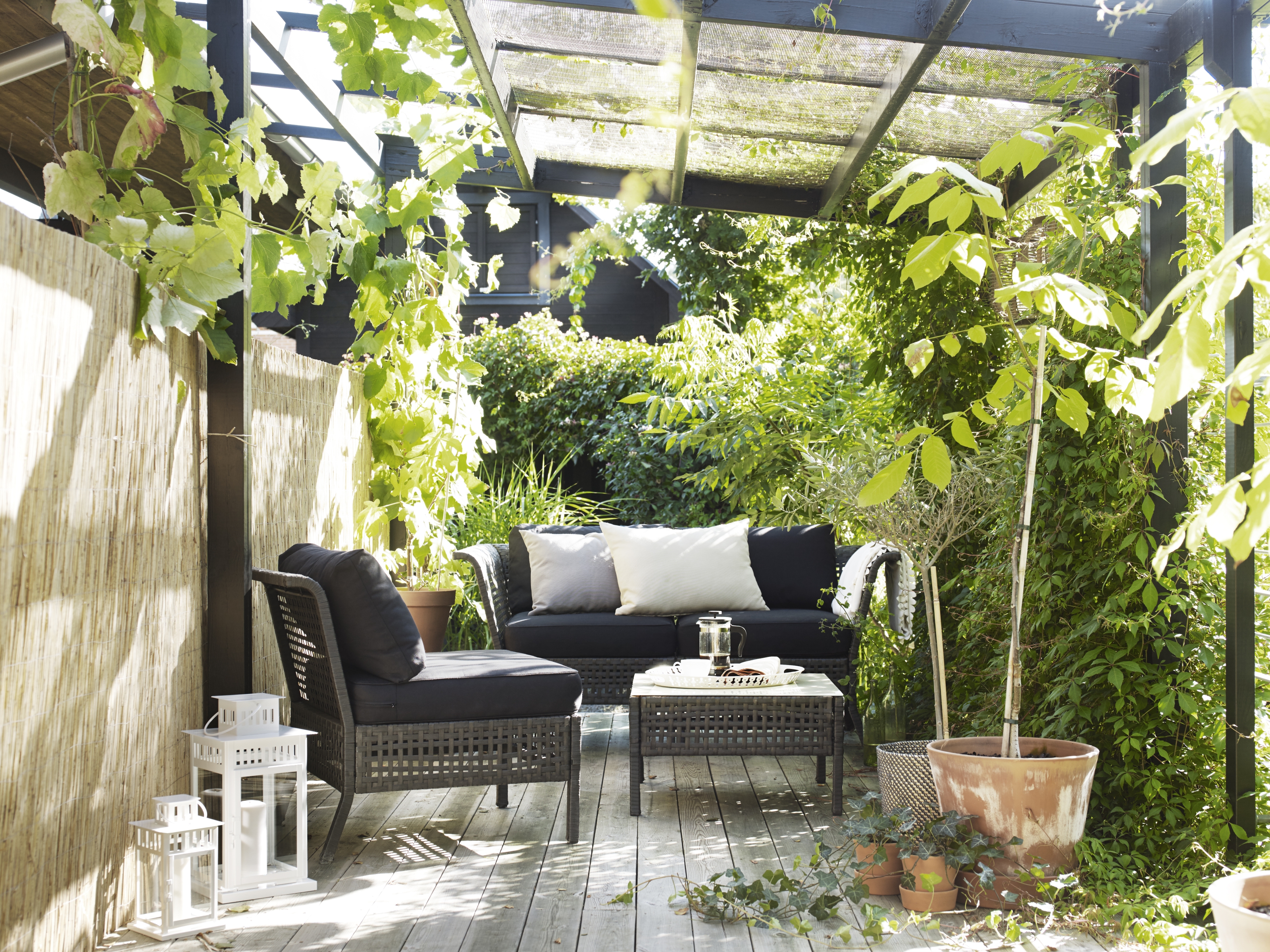
The patio, deck or terrace is the focus of any garden, where activities such as eating and entertaining take place. Always make sure you allocate enough space for one. We love this roomy and inviting rattan range from Ikea
(Image credit: Ikea)
Establishing a design brief of what you want and need from your garden space is essential and therefore the first step of your garden planning process.
You will need an understanding of any problems that need to be solved – such as a lack of garden privacy, water logging issues, lack of colour and the like – and, of course, of all the goals you want to achieve with your garden project.
Lane suggests mulling over 'Do you like a particular style of gardening, such as cottage, prairie, sensory, seaside, tropical or modern? Understanding the look and feel of each is paramount for getting it right.'
Spend time talking with family and friends about why you're taking on this project, ahead of diving into and drawing up your specific garden design aims. This will help you determine whether you should need to employ a professional garden designer or complete the work yourself.
Other factors to consider also are whether you are renting a house or if this is your forever home. As if you rent but want to redesign the garden to enjoy your outside space for a definitive amount of time, you may want to consider mainly cosmetic changes to ensure that whatever you spend will be able to come with you to your next home. Meaning that container planting, moveable garden lighting, storage and more portable features within an outdoor kitchen for example should be favoured.
And, if this is your forever home, at least for the next few years until you sell to buy elsewhere, you can prepare for a bigger change and for a garden that will come into its own over the next few years, and that might even add to your property value. You might want to establish a cottage garden or a really contemporary outdoor space complete with a garden office and the like. This will naturally be more work and more costly to begin with, but very much worth it.
- Find out more on how to build a garden room or add an outbuilding to your outdoor space.
2. Decide what to change and what can remain

(Image credit: Jo Thompson)
While a complete makeover often results in a more coherent outcome, it can be very expensive and demanding of time. Making subtle tweaks inevitably costs less, but this approach has more limited scope. Spend time looking critically at the garden and both its good and bad points before developing a new 'masterplan', and before you carry out any of the work. You might want to swap a tired patio out but other features, such as an attractive decking area or mature trees, can remain.
- Find plenty of brilliant decking ideas in our guide.
3. Understand garden design costs
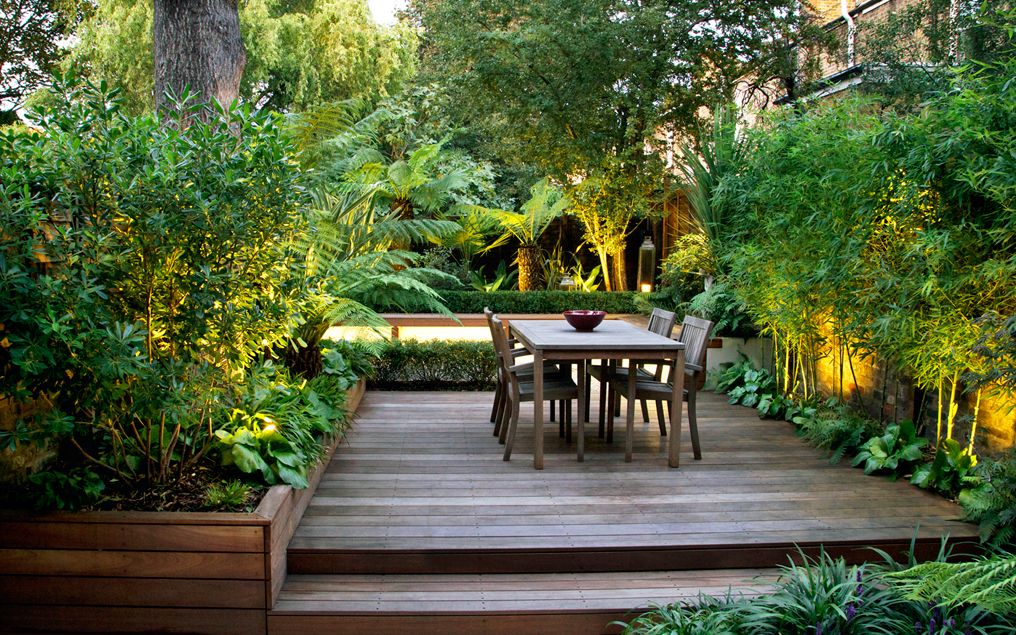
(Image credit: My Landscapes)
Even if you keep some existing features, completing even a small garden with a relatively simple design for less than £6,000 to £7,000 can be challenging once design fees, materials, plants and employing contractors (which normally amount to at least half the budget) are factored in.
Most new garden landscape designs cost in excess of £10,000, and that's for a small garden. A suburban garden will probably be in the region of £17,000 to £25,000. This might seem a lot, but consider what you might spend on a quality kitchen or bathroom and how much this adds to the value of your home and quality of life.
Remember that sloping gardens have insufficient drainage, and that any structural elements may need to be removed, such as walls, garden rooms or old paving, which will cost more to redesign as the initial outlay for the preparatory works will be higher than when dealing with a plain, flat area.
4. Then, set the budget for your garden design
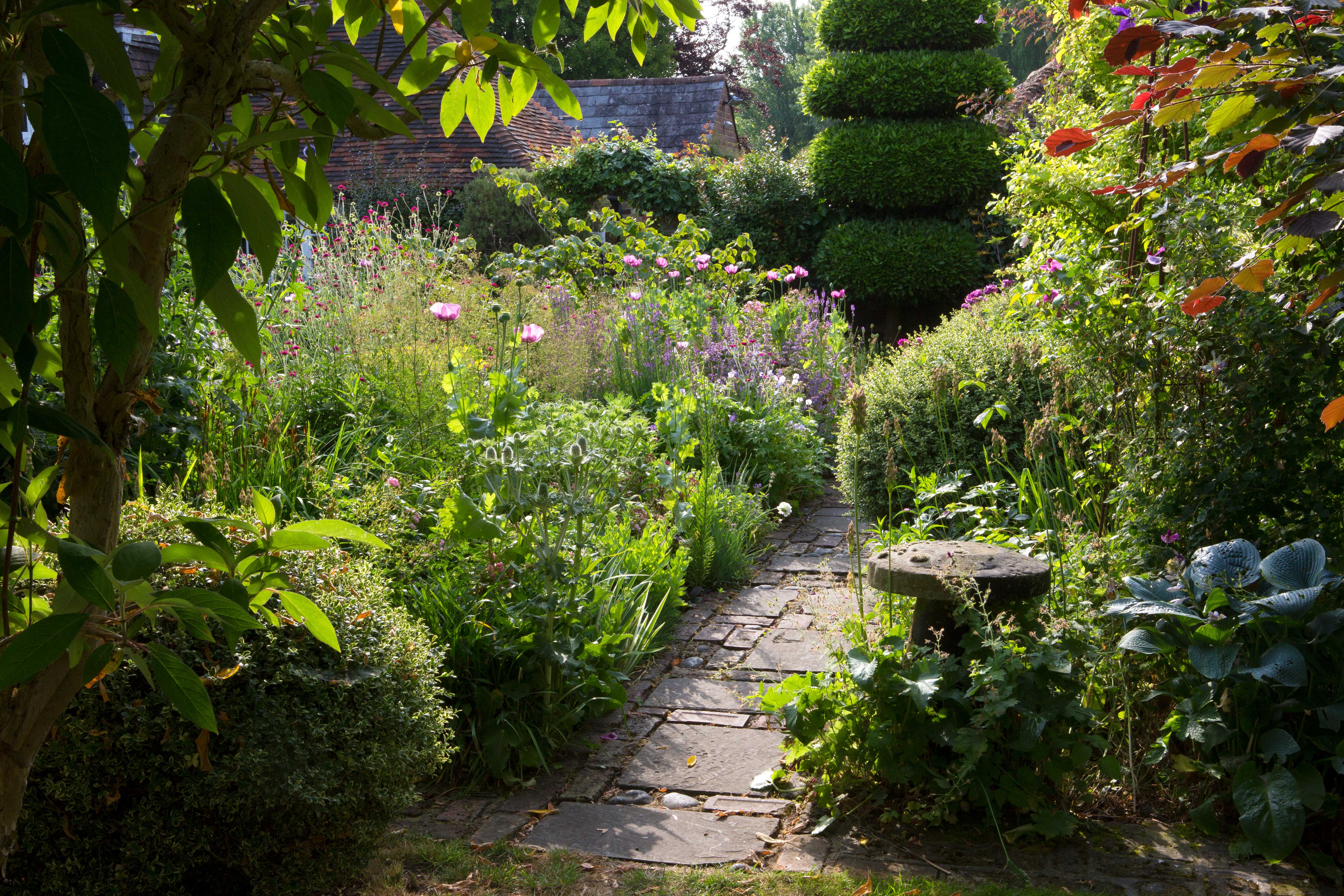
(Image credit: Leigh Clapp)
A new-look garden can be very expensive, especially when it comes to modern garden designs, where a clean finish is essential. Some garden designers will recommend spending 5 to 15 per cent of the house value on the garden, which, in turn, will add a similar, if not larger amount, to the value of your home. Others talk about allocating at least £100 per square metre of garden, although some will double this figure.
Work out how much you can afford to spend and see where you can make savings easily. Unfortunately, setting a simple rate for metres squared or percentage of house value isn't the most reliable way to work out the cost of your garden design if going through a professional, as there are so many options and it will largely depend on your chosen design, the state of the plot when you begin, and the elements you wish to include.
Other high-cost practices include the desire for instant impact, such as complex shapes and curves in garden borders; requirements for extreme accuracy; fixed design details with no ability to adapt on site; and hiring specialist tradespeople that have to travel some distance.
Moving underground services, drainage works, demolition and site clearance work will also add to the cost, especially if access is tricky or there's a need to work by hand.
If you are on a tight budget or upgrading a rented garden, you will want to go for for high-impact, but budget garden ideas. Reclaimed and recycled materials generally cost less than new, while 'fluid' materials, such as gravel, are cheaper than paving. You should also opt for plants over hardscape. In many gardens, it's possible to cover or clad rather than remove – a sound concrete pad, for example, might be the ideal sub-base for attractive paving.
Finally, always have a contingency fund. Between 5 to 15 per cent of the total budget is ideal, but the higher the better, especially if you are tackling the project yourself. While savings will be made in some areas, inevitably you will make mistakes in others. Maintain the balance.
- For simple garden ideas see our guide.
5. Decide whether to hire a garden designer

(Image credit: Lights4fun)
Many people view professional fees with scepticism, but it can be worth it. If you are working with a big garden space and have never undertaken a large garden project before, – or don't have experienced friends or family to call on when you need to know how to lay decking for example – consider hiring a garden designer. They will help in all areas of your gardening design project, and can save you money in the long run.
If you're working with a designer, the brief should be developed together before being agreed. Avoid requesting specific design details – 'decking', for example – at the outset. Instead, descriptive words such as 'durable', or 'warm' will evoke a more creative response – the reason you probably engaged the designer in the first place.
Statements in the brief should always be measurable (this is essential when working with others) and specific, to avoid ambiguity. For example, 'formal dining space for six people with shade overhead between June and September' is far better than 'space to sit and dine with friends'. Note that parts of the brief might change, but you still need one, otherwise the project will lack clarity and inevitably cost more than planned.
As many gardens are remodelled at the same time as undertaking a house renovation, so a good designer will liaise with your architect and main contractor to help make sure the combined project runs smoothly. If your budget prohibits taking on a designer full-time but if you aren't that confident flying solo, you could consider just a day's consultancy to help steer you in the right direction (from £275 to £750 per day).
6. Or, learn how to design a garden yourself
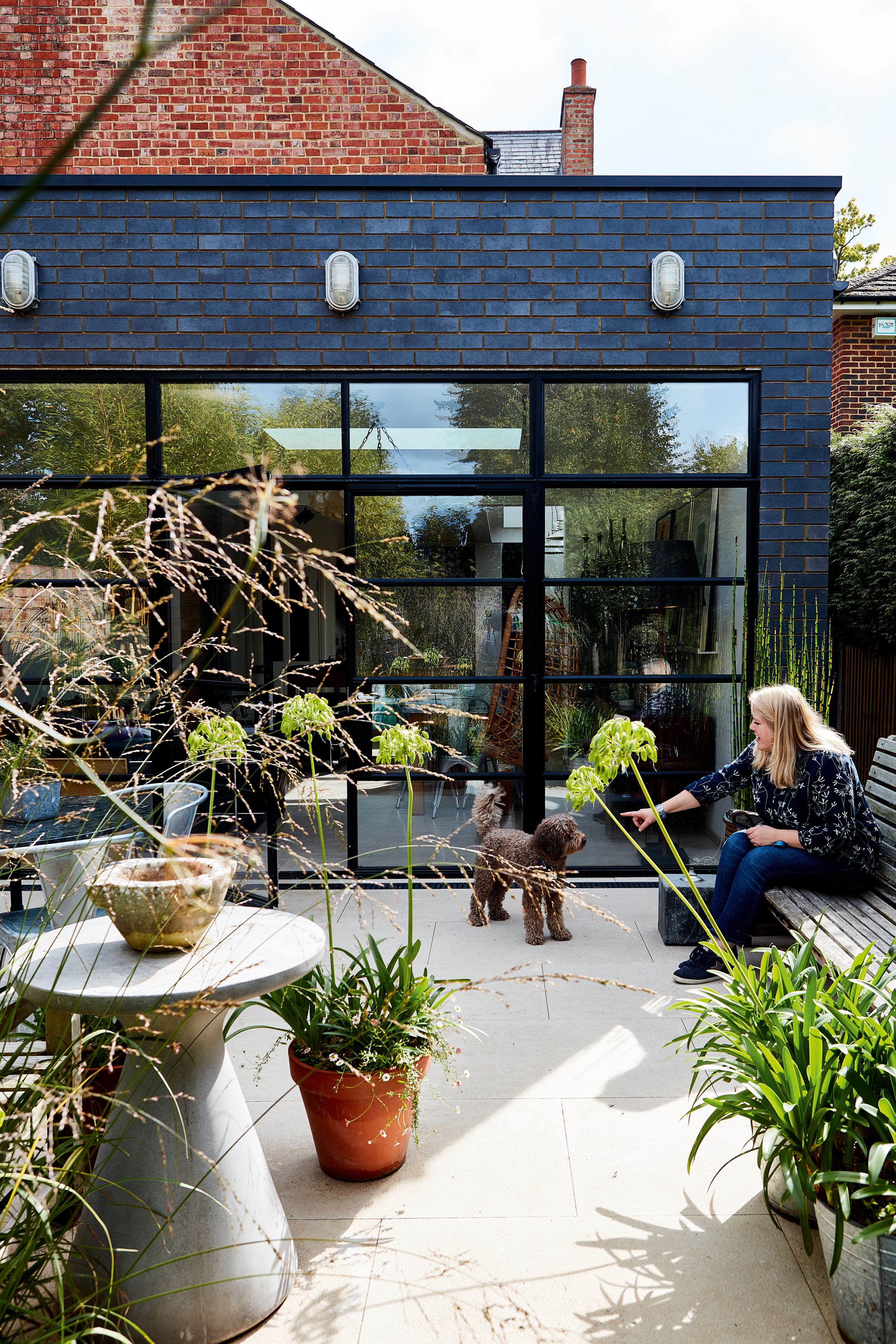
(Image credit: Malcom Menzies)
Designing a garden yourself is a satisfying, pocket-friendly option which will allow you to get really creative. There are so many resources and even garden design apps available to help you bring your outdoor space to life whether you need small garden ideas, looks for a bigger plot, for a balcony or courtyard garden. This is where to start:
- Head outside and measure up: You'll need a measuring tape, notepad, pencil and rubber. Measure, starting with the biggest areas, followed by small sections including nooks and crannies, finally noting down the dimensions of any existing garden rooms or outbuildings. Lane says 'Take measurements of the garden, patio or balcony — especially the width and length.'
- Establish your garden's aspect: Visit your garden at different points during the day to understand its 'aspect' (the direction that your outdoor space faces – explained in the next section) and make a note of any shaded garden spots as this will determine any planting and your final garden layout. This is best done with a compass but you will be able to figure it out without also! Lane says 'If the garden leads off the back or front of the house, sit back with a coffee and biscuit (or two). Then, watch where the sun comes up and where shadows fall in the garden; will the area close to the backdoor be in full sun all day, or be in partial shade?'
- Establish privacy needs: 'Draw lines leading off from windows and doors, as these will become sight lines.' Once you know this you'll be able to find the most suitable garden screening ideas for your space's needs.
- Draw up a garden layout: Sketch one by hand or render a garden design on your computer, to scale if possible.
- Pull in your favourite garden features or desired theme: Bring together all your garden inspiration from online features, social media, magazines and the likes.
- Incorporate planting accordingly: Whether you want to create a tropical jungle, a thriving kitchen garden or a pared back cool modern garden space, you'll need to get the planting right. Chris Bonnett from GardeningExpress.co.uk says 'Once you've thought about the theme and style of garden you want, be sure to choose plants that fit closely within this so that they won't look out of place. If you have opted for a jungle approach, add big leafy plants. Those with a Japanese style garden may want to focus on natural elements or add a water feature. Mediterranean gardens are perfect for summer because of how bright and colourful they are. Have fun picking out bold shrubs and ornamental grasses. However, it is a good idea to consider the times of year you will frequently be out in the garden, so that you can ensure the choice of plant will thrive when you can enjoy it the most. If it is a space you use all year round, look for plants that will flower at different points and shrubs that will keep their colour over winter.'
- Think about materials: Lane says to 'Next, consider the materials that you want to use. Natural materials — such as stone, gravel and wood — lend themselves to traditional styles. On the other hand, clean-cut, porcelain tiles, a monochrome palette or strong architectural features and modern sculpture are better for modern or contemporary gardens. Remember, there are no rules other than your own. You may even like to mix up materials and aim for an eclectic look.'
- Consider any additional features: This includes garden rooms, orangeries, sheds and the likes. If you have a balcony or small courtyard garden you could consider an outdoor cinema setting, better garden storage and more to help enhance the space you do have.
- Working with an elevated garden? Here are some balcony ideas to inspire you.
7. Understand garden aspects
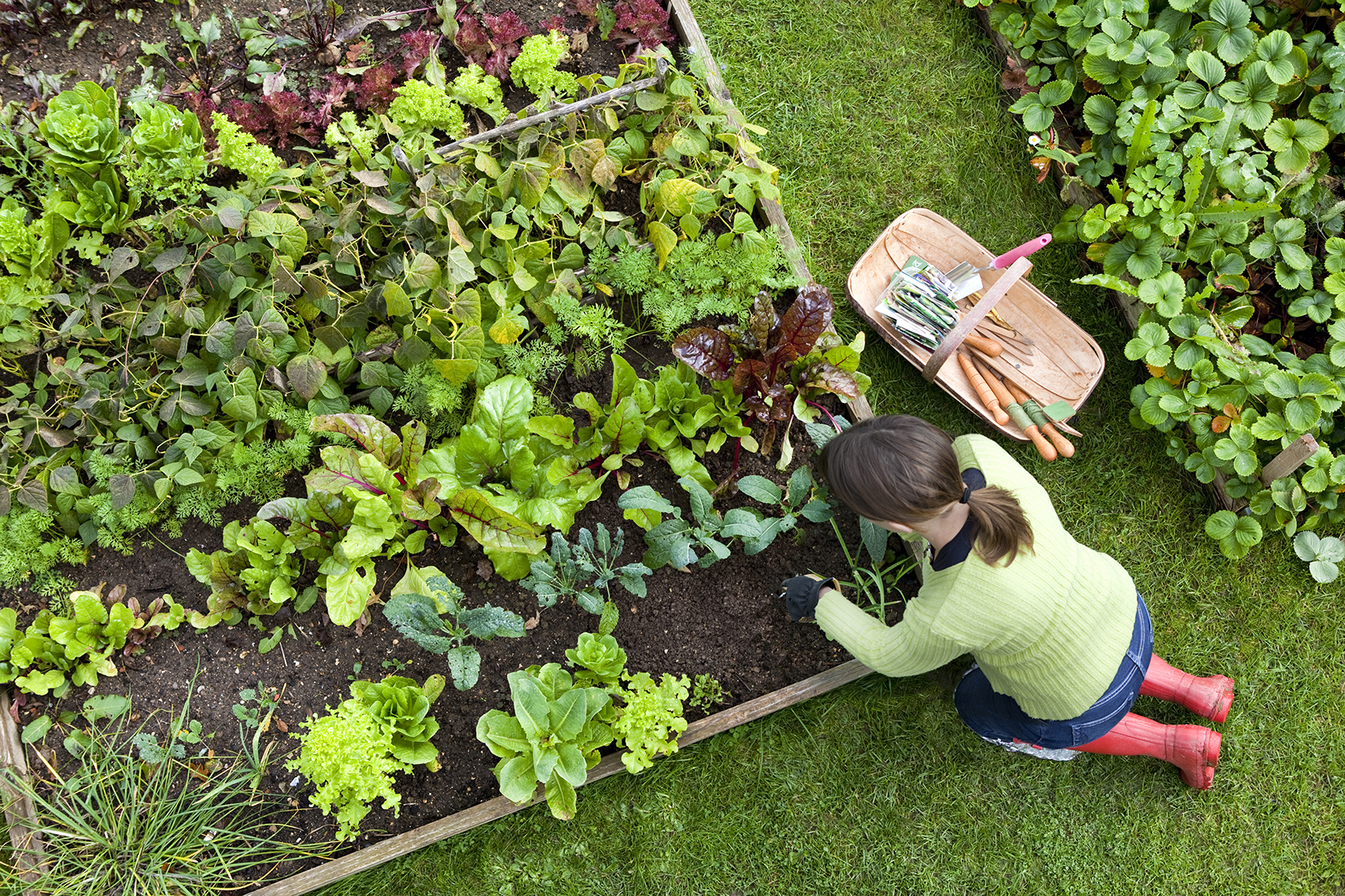
(Image credit: Getty Images)
- North-facing gardens: These will usually have shaded spots for the best part of the day so you'll get the best look from shade garden plants.
- South-facing gardens: South-facing spaces will enjoy all the sunshine so you can go to town on Med plants and your herb garden will stay looking fine too.
- West-facing gardens: Here you will enjoy shade in the AM and sun during the afternoon, through until the evening. You will find lots of hardy plants like roses, tulips, geraniums and more to add interest,
- East-facing gardens: In an East-facing garden, plants will enjoy morning sunlight and evening shade letting you choose more shade loving but flowering varieties if you wish like Anemones and Viburnums.
- Find the best garden plant ideas for your soil type too.
8. Consider garden maintenance

(Image credit: Leigh Clapp)
Specific wants and needs vary from person to person, but ask yourself, 'how do I want to feel?' and 'who is the garden for?' along with considering how much time you have for garden maintenance. Together with a particular style or theme in mind, the answers will determine the layout and design details. Consult all family members, even the kids and understand that a little compromise is usually necessary!
For instance, if you want to include a veg patch, this will require general upkeep throughout the seasons. While if you'd like to include a beautiful rose garden, you'll need to ensure that you're happy to prune them when needed.
If you're considering including an outdoor living space, you'll need to take care of any garden furniture and soft furnishings within it to ensure it lasts throughout the seasons.
9. Think about the timescale
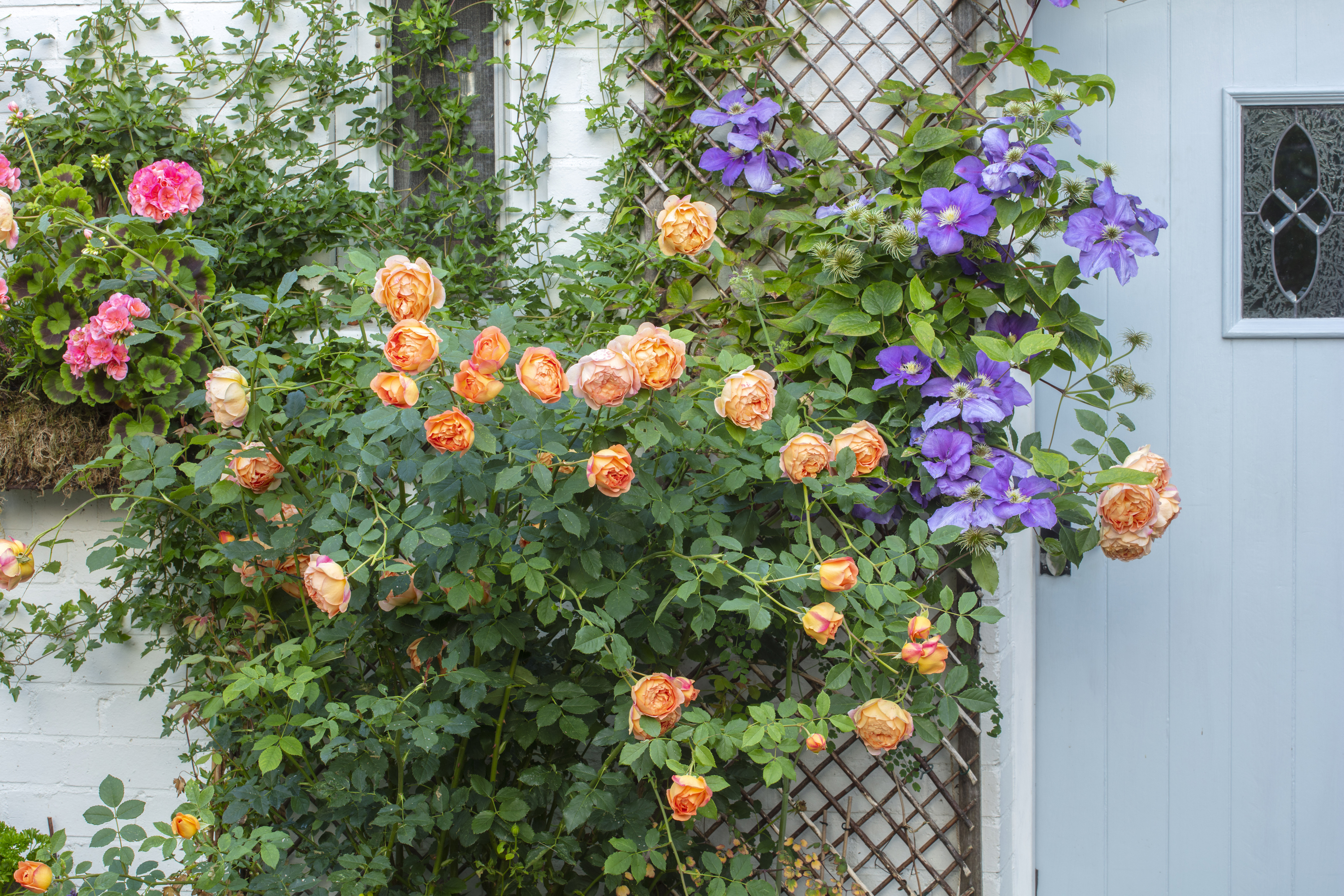
(Image credit: Clive Nichols)
This depends on the scale of your project, however, not everything needs to be completed at once, and with a tight budget it's unlikely that it will be. Instead, phase the project, completing elements from the masterplan when finances are available. Unfortunately, the most important parts, which need finishing first, are usually the most costly. These include building retaining walls, steps and ramps, boundaries, patios and terraces, and paths. Semi-mature specimen plants to screen nosy neighbours are also costly. Tempting as it may be, leave design details such as ornamental planting, pots and furniture until after the bones of the garden have been completed.
Think about the seasons, too. Most gardening and landscaping work is carried out between spring and early autumn, when nights are shorter and the weather is warm. The best planting season is early- to-mid spring and early-to-mid autumn. All this needs to be factored into your timeframe. Good contractors will get booked up early, so the quicker you start to develop the actual design, the better.
- Find gorgeous ornamental grasses in our roundup for the perfect landscape.
10. Check if your garden design requires planning permission

(Image credit: John Lewis & Partners)
For most garden projects, it isn't necessary to apply for planning permission, but you will need to in certain cases – extending boundary heights, extensive terracing, decking platforms above 30cm and new paving in the front garden being the most common examples. If you live in a conservation area then the rules can vary wildly, so always check with your local authority. Usefully, new plants and trees aren't covered by planning permission, although existing trees may have a Tree Preservation Order to protect them. Contact your local authority to find out.
If you are working on an existing party wall or directly next to a boundary, the Party Wall Act is likely to apply. For detailed information, visit planningportal.co.uk. Details of the allowable height and size of garden structures, such as new outdoor home offices, can also be found here.
Where to find the latest garden design inspiration
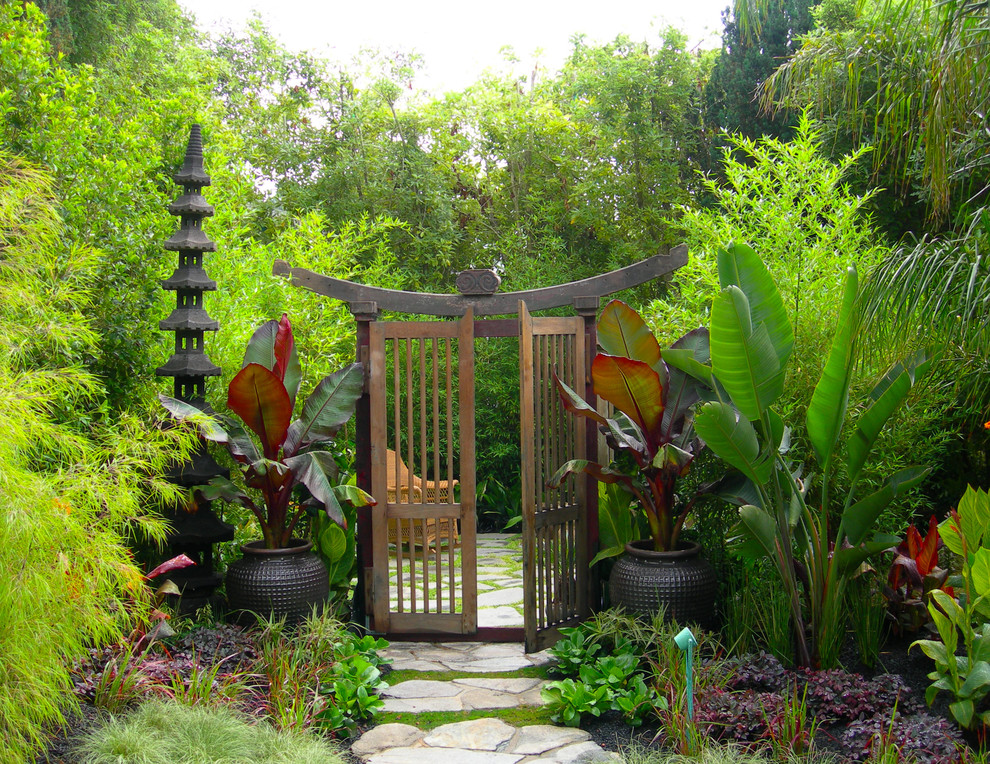
(Image credit: Zeterre Landscape Architecture)
When looking for ideas and inspiration, there are so many avenues to explore on social media – think Pinterest and Instagram to find the best of Monty Don and many more great horticulturists.
For more classic garden designs, you may want to use books such as the RHS Encyclopedia of Garden Design, RHS The Urban Gardener, Heidi Howcroft's Garden Design: A Book of Ideas and John Brookes' legendary Small Garden Book that can all help you to develop ideas with your wants and needs in mind.
Magazines are also good for inspiration, and specialist ones keep up with key trends at important flower shows, like Chelsea and Hampton Court – useful if you can't visit in person.
Go to open public gardens that are part of large estates and country homes to see materials and planting combinations. Better still, seek out local plots of a similar size to your own that open as part of the National Gardens Scheme (NGS). You'll discover everything from traditional cottage gardens to contemporary courtyards.
- How to choose the best plants for gardens .
Now you can enjoy your garden all year round.
How To Plan Your Garden
Source: https://www.realhomes.com/advice/garden-design
Posted by: striplinprivent.blogspot.com

0 Response to "How To Plan Your Garden"
Post a Comment